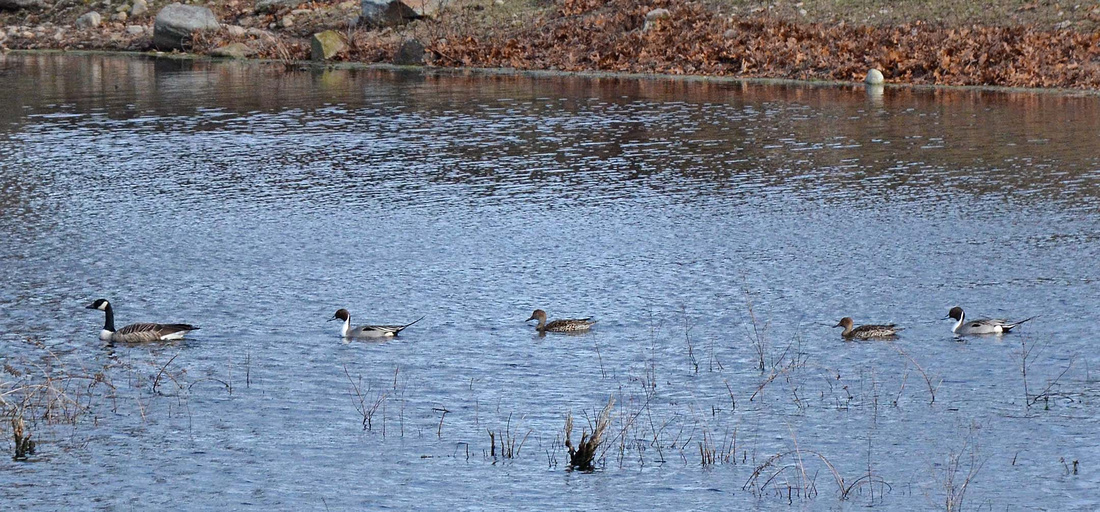Ducks—and a goose—in a row
 First Pintails, Palmer's
First Pintails, Palmer's
Another item on my natural history walk agenda is to visit places where I can spot the first migrating waterfowl. Mallards, which are often easily found all winter, don't count, and, of course, neither do Canada Geese, which are now permanent residents. But when the ice begins to disappear, there's one pond nearby that I often head to because it always serves as a migrant magnet. It's usually where the Red-winged Blackbirds put it their first appearances, and it's along the pond's muddy edges that I typically spot the first Killdeer, a noisy shorebird not at all averse to traveling north via an inland route. But today, with the ice long gone, I was looking specifically for Pintails, a handsome duck whose males bear a white neck, contrasting dark head, long and needle-like tail, and other plumage characteristics that Sebastien Reeber, in the Princeton University Press's spectacular new Waterfowl of North America, Europe & Asia: An Identification Guide—the definitive guide, I might add—declares "cannot be mistaken" for any other species. The more drab females are not so easily identified, but this Pintail quartet made the ID game easy. As more ducks arrive, things will get more challenging... and the new guide will get more of a field test.